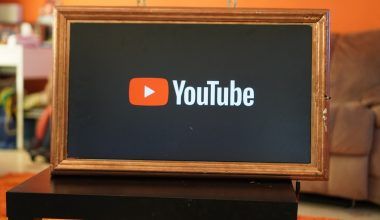How Do I Sell My Music on iTunes is one of the most exciting opportunities for independent artists. Whether you’re a budding musician or a seasoned performer, getting your tracks on iTunes can be a game-changer. But how do you actually do it? Don’t worry, we’re here to make this process simple and straightforward for you. Let’s dive right in!
Why Sell Your Music on iTunes?
Before jumping into the “how-to,” it’s important to understand the “why.” iTunes is a trusted platform with millions of users worldwide. It’s a great way to reach a broader audience and make your music available to fans who prefer purchasing tracks. Selling your music on iTunes also helps you build credibility as an artist and earn revenue directly from your art. With iTunes being a household name, having your music listed there can make a strong impression.
Can Anyone Sell Music on iTunes?
Yes! Whether you’re an independent artist, part of a band, or even a producer, you can sell your music on iTunes. There’s no need to be signed with a big label. However, you’ll need to follow some steps and meet certain requirements to get your music listed. The good news is that with a bit of effort, anyone can do it.
Step 1: Create High-Quality Music
Your music’s quality matters more than anything else. Before uploading your songs to iTunes, ensure they’re professionally recorded, mixed, and mastered. If your tracks aren’t ready yet, take the time to polish them. Listeners on iTunes expect high-quality sound, so this is not a step to skip.
Step 2: Choose a Distributor
Unlike uploading videos to YouTube, you can’t upload your music directly to iTunes. You’ll need to use a music distributor. Distributors act as a middleman, helping independent artists get their music on platforms like iTunes, Spotify, and others. Some popular distributors include:
- TuneCore
- CD Baby
- DistroKid
- Amuse
- Ditto Music
Each distributor has its pros and cons, so research and choose one that fits your needs. Consider factors like pricing, payout percentages, and additional features.
Step 3: Set Up an Account with Your Chosen Distributor
Once you’ve selected a distributor, it’s time to create an account. This usually involves providing your personal information, payment details, and, in some cases, tax information. The setup process varies by distributor, but it’s generally straightforward.
Step 4: Upload Your Music
After setting up your account, you’ll need to upload your tracks. This step involves:
- Uploading your audio files in the required format (usually WAV or FLAC).
- Adding metadata, such as song titles, artist name, album name, and genre.
- Uploading album artwork that meets iTunes’ specifications.
Distributors typically provide guidelines to help you with these requirements. Follow them carefully to avoid delays.
Step 5: Set Your Price
Most distributors let you set a price for your tracks or albums. Think about what your audience would be willing to pay. Keep in mind that iTunes takes a percentage of each sale, so factor that into your pricing strategy.
Step 6: Submit for Review
Once everything is uploaded and set up, your distributor will submit your music to iTunes for review. This process ensures that your tracks meet Apple’s quality standards and guidelines. The review can take anywhere from a few days to a couple of weeks, so be patient.
Step 7: Promote Your Music
Congratulations! Your music is now on iTunes. But the journey doesn’t stop here. To maximize your sales, you need to promote your tracks. Here are some tips:
- Share links to your iTunes page on social media.
- Create engaging content like music videos, live sessions, or behind-the-scenes clips.
- Collaborate with other artists or influencers to expand your reach.
- Use email newsletters to inform your fans about your release.
- Encourage reviews and ratings on iTunes.
How Do You Get Paid?
When someone buys your music on iTunes, Apple takes a cut (usually 30%), and the rest goes to your distributor. Your distributor then pays you based on their payout schedule. Be sure to read your distributor’s terms carefully to understand when and how you’ll get paid.
Common Challenges and How to Overcome Them
While selling your music on iTunes is relatively simple, you might face some hurdles. Here’s how to tackle them:
- Rejection from iTunes: If your music doesn’t meet Apple’s standards, don’t be discouraged. Review their feedback, make the necessary changes, and resubmit.
- Low Sales: If your music isn’t selling as much as you’d hoped, focus on marketing and building your fanbase.
- Technical Issues: If you encounter technical problems, contact your distributor’s support team. They’re there to help you.
Final Thoughts
Selling your music on iTunes is an excellent way to share your talent with the world and earn revenue. While the process might seem daunting at first, it’s entirely manageable if you take it step by step. Remember to focus on creating high-quality music, choose a reliable distributor, and promote your tracks effectively. With persistence and hard work, you’ll see your music reach new heights.
For further reading, explore these related articles:
- Gospel Songs: Bringing Peace and Joy to Every Heart
- Trippie Redd – The Story of a Music Star Who Breaks All Rules
For additional resources on music marketing and distribution, visit DMT Records Pvt. Ltd..






